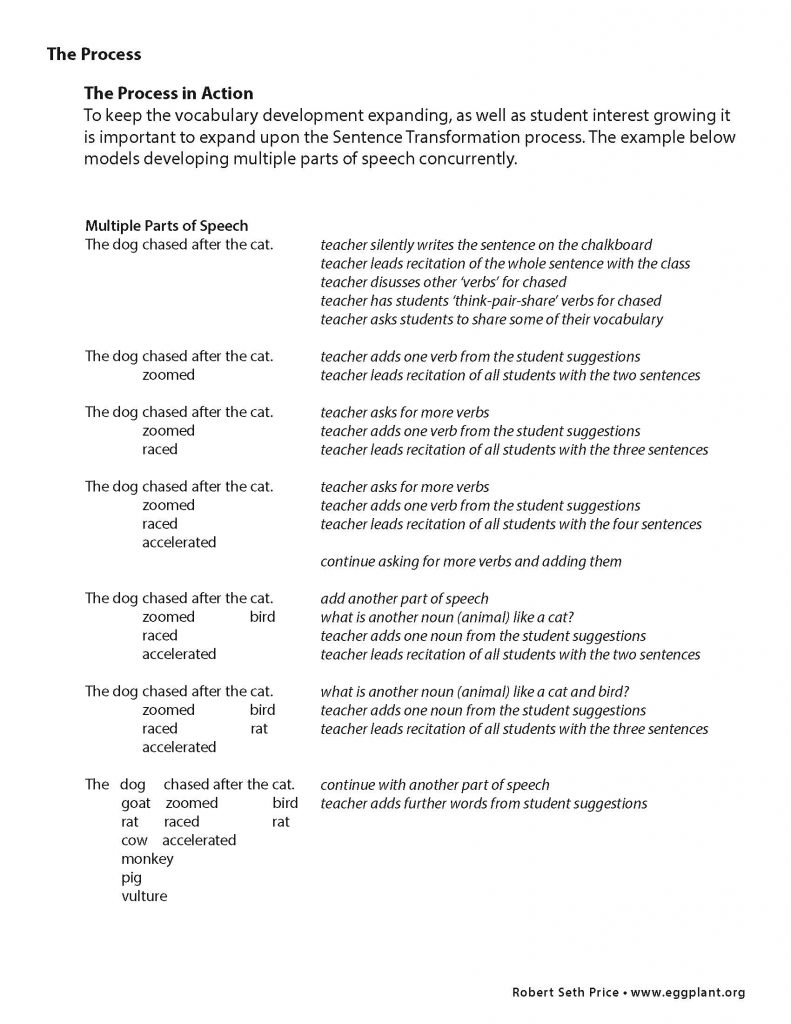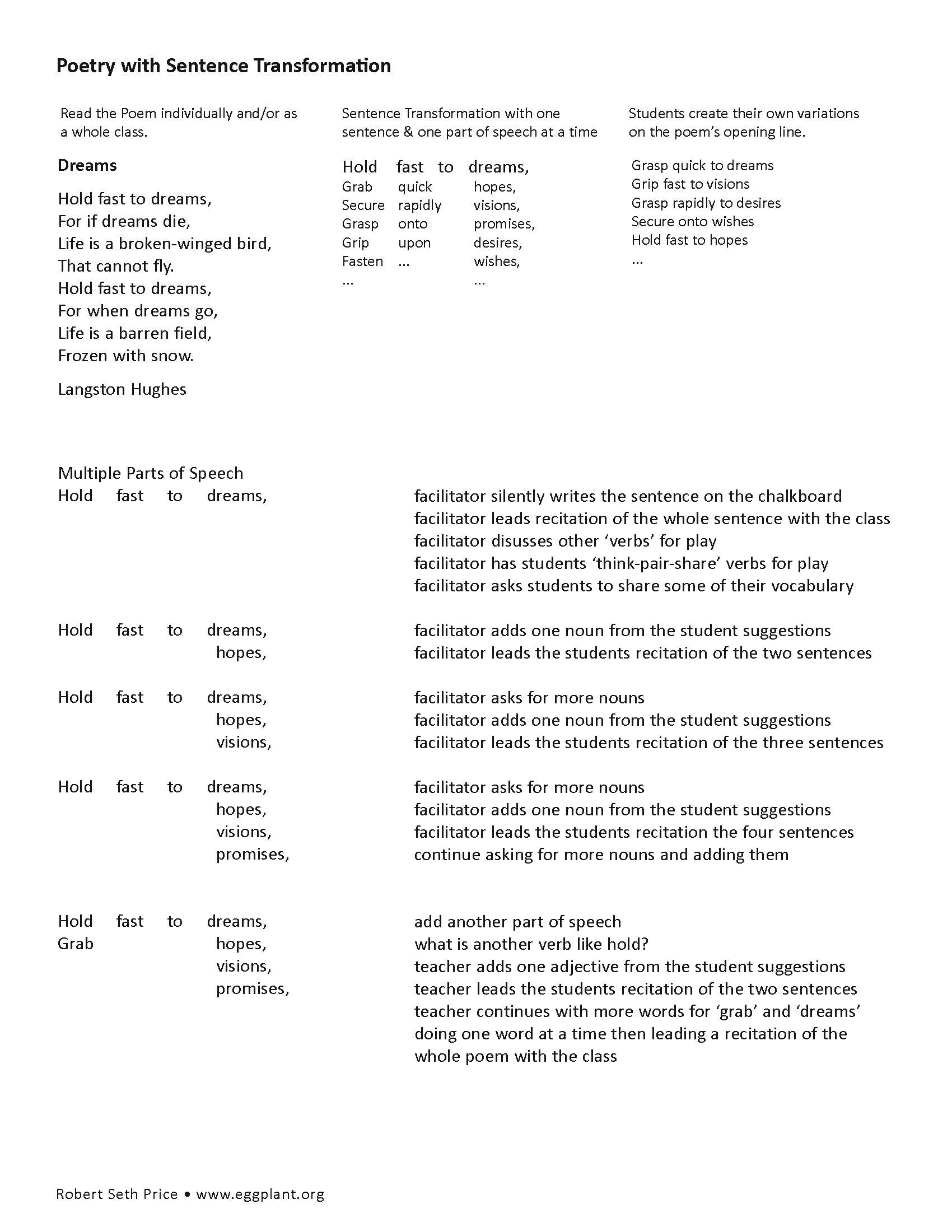Sentence Transformation
PDF of Sentence Transformation
Page Overview
- Description Including How To
- A collaborative method to increase vocabulary, fluency and ideas
- Videos including with Students, Teachers and Bilingual
- Examples for Early Elementary, Upper Elementary, Middle School and Secondary
- PDF of Sentence Transformation
- PowerPoint
Overview
Sentence Transformation for Vocabulary Development is a collaborative method to build vocabulary from prior knowledge, readings, schema connections, and peer to peer learning. Sentence Transformation models and develops reading fluency, vocabulary, parts of grammar (nouns, adjectives, adverbs, prepositions, etc.), langauge and spelling patterns and collaborative learning. This method is applicable at all grade levels and across all content areas.
Strengths: Sentence Transformation is a process that involves the whole class and/or small groups in a very participatory activity that builds vocabulary and fluency. It requires minimal resources – a white board, chalkboard, smart board or doc camera. Students can lead the process in addition to the teacher. For the teacher it is an excellent opportunity to model reading with fluency and thinking aloud with vocabulary development.
When and Sentences Used: The process takes approximately 5-15 minutes. It is recommended doing the process 1-2 times daily. The sentence can most effectively connect to content during the day. This can include using a sentence with a main idea of content, or a sentence with specific sight words, or words with a particular tense in mind to see patterns (eg. past tense verbs – most ending in ‘ed’).
Extensions: After developing vocabulary with the sentence for various parts of speech, students can extend this activity by writing sentences from the developed sentence transformation. Additionally, the vocabulary if connected to current studies and content can be used as part of a vocabulary word wall.
Synonym Triplets are using three synonyms (eg. large, huge, humongous) from a sentence transformation in a rhythmic sequence of the three vocabulary words.
Needs: A medium or large size white board and/or projection are very effective. This provides sufficient space to write complete sentences (row) and develop a wide range of vocabulary (columns).
Academic Vocabulary
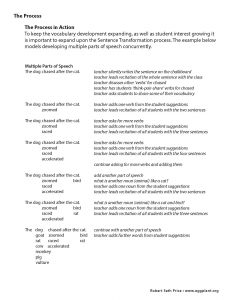 When eliciting verbs, ask for verbs with the word verbs (learning through actions); when eliciting adverbs, use ‘adverbs’ in building more averbs; and so forth.
When eliciting verbs, ask for verbs with the word verbs (learning through actions); when eliciting adverbs, use ‘adverbs’ in building more averbs; and so forth.
Grounding Principles
- Fluency
- Performance and Community
- Relationships
- Patterns
- Student Voice
Components for Success
- Rhythm
- Using regularly
- Recitation of all sentences after adding each new vocabulary word
Students as the Facilitators
Having students becoming the whole class and/or small group leaders provides an opportunity to peer to peer transfer, observation of students to assess the student leaders as much as the participating students.
The Process
- The teacher writes the sentence on the chalkboard saying nothing with the students watching
- The teacher recitates the sentence while tracking (pointing to) the words in phrases
- The teacher selects one part of speech (e.g. adjective) and asks for words with similar meanings
- After adding one word, the teacher recitates with the students the complete sentence with each added vocabulary word
- The teacher continues with this process adding futher words to the part of speech being expanded
- Reminder—add one part of speech, then recitate all the sentences so far. This supports fluency practice and learning the patterns progressively.
Grounding Principles
- Fluency
- Performance and Community
- Relationships
- Patterns
- Student Voice
Components for Success
- Rhythm
- Regulary
Students as the Facilitators (Teachers)
Having students becoming the whole class and/or small group leaders provides an opportunity to peer to peer transfer, observation of students to assess the student leaders as much as the participating students.
In the Classroom: Two examples for Elementary, Upper Elementary and Middle School
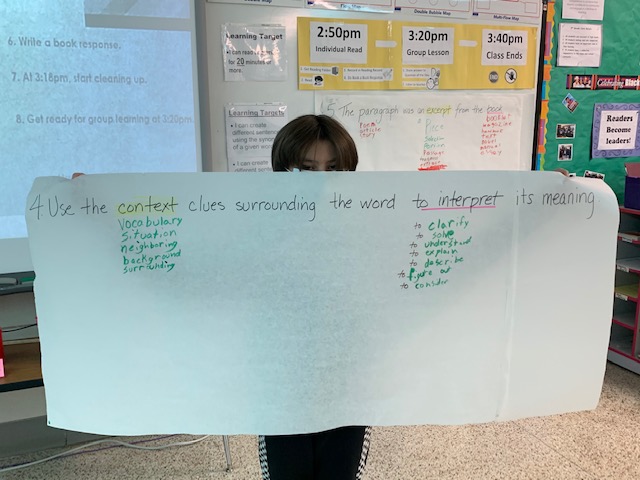
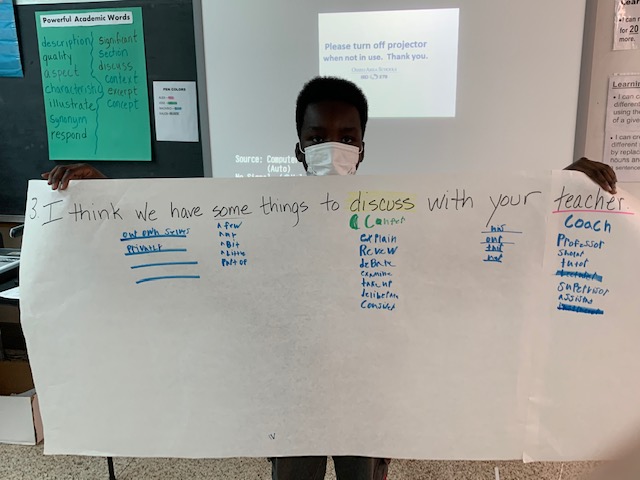
Sentence Suggestions for Sentence Transformation
PDF of Sentence Transformation
The choice of sentences to use for Sentence Transformation begin with the purpose and the why. If you are studying a particular content, a key sentence that guides meaning could be a good choice. Opening lines from well written books (eg. Jason Reynolds and many more) can be a model for creating opening lines. Another could be with poetry and song lyrics with the goal of learning to write new verse from the student’s interests and schema. Another purpose could be use of sight words in a sentence to build fluency and context. If prepositional phrases are a goal, then create a sentence that guides this purpose in learning. Furthermore, the use of Sentence Transformation is also a means of using a sentence frame to guide writing through the use of student generated vocabulary. Have students pick sentences too — their adventurous spirit will likely guide us and the class to new ideas.
Writing From Sentence Transformation


